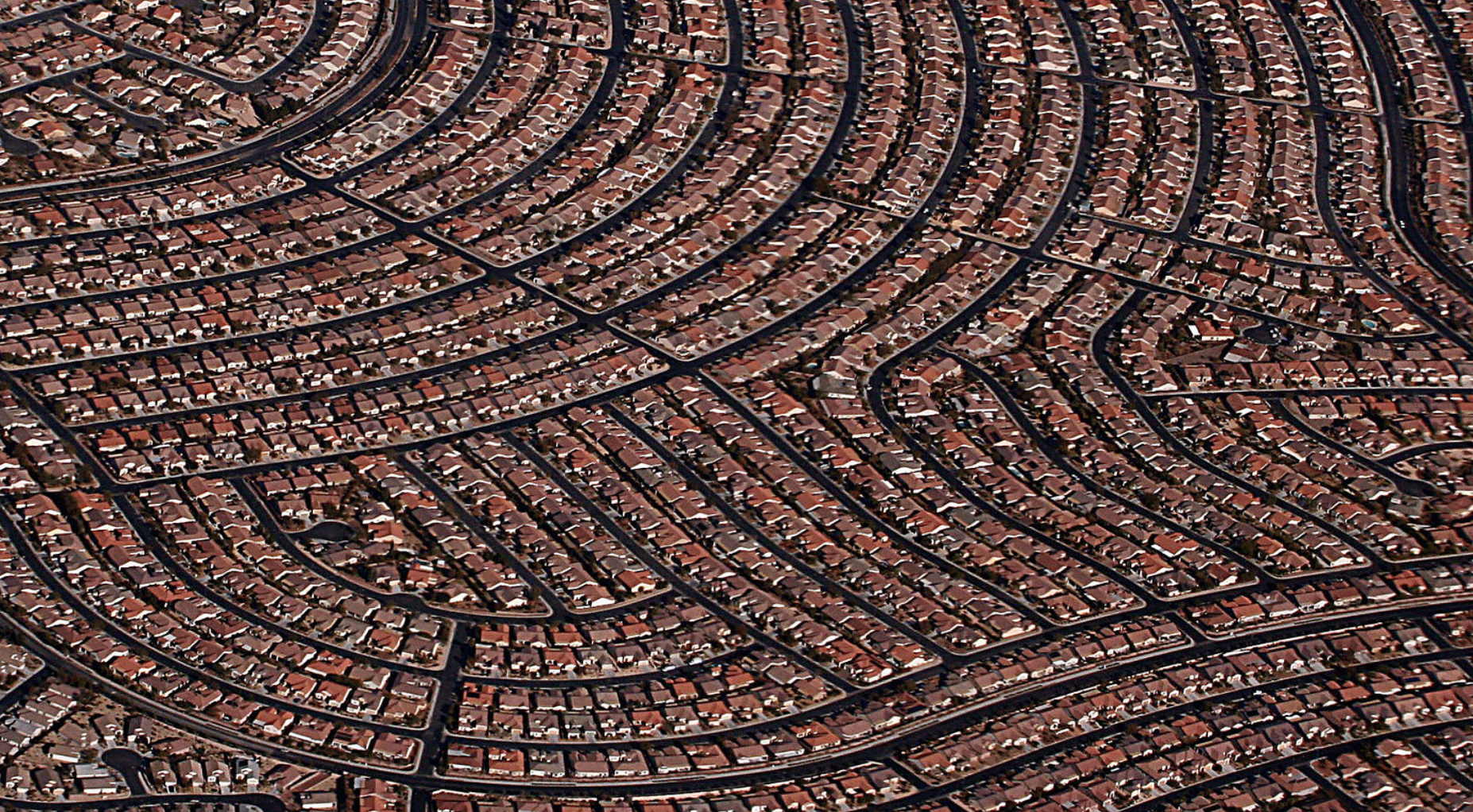Why are suburbs and sprawling killing the planet?

Urban sprawl, also called sprawl or suburban sprawl, is the expansion of cities and towns, often characterized by low-density residential housing, single-use zoning, and increased reliance on the private automobile for transportation.
Sprawl has been mainly caused by the strong need to accomodate a rising urban population and the desire by urban dwellers for increased living space.
It has been made possible by the rise of private cars and cheap fossil fuels, allowing people to commute longer distances than ever.
With the rise of population worldwide expected to reach 9.5 billions inhabitants in 2050 and the urban population expected to make up 70% of the population, our cities have to accommodate 3 billion more people in just 30 years (source: United Nations) .
The temptation of answering this rise in urban population with urban sprawling, as we might have done in the past is real. But with climate change and what we now know about sprawl, cities should rethink their ways of planning and find new solutions to accommodate these new dwellers.
Let’s see why sprawl is so damaging to our planet, and what could be the solution to develop our cities in a new and less harmful way.
Destruction of natural land
One of the most obvious consequences of sprawling is the destruction of natural land.
The impact of urban sprawling, such as loss of natural land, fragmentation of forests, wetlands or other wild habitats are immediate and irreversible. Water streams are often channeled to provide efficient drainage for human dwellings and although the local wildlife sometimes remain, migration corridors are often disrupted, or species isolated and separated from each other, forcing them to cross human dominated areas for food or mates.
Agricultural activities are also strongly impacted, as they are competing with urban sprawl for the same lands. Sprawling often causes loss of the best agricultural lands, as cities used to be settled next to them, thus displacing farmlands to less productive areas where more water and fertilizers are required for the same output and in areas with increased risks of soil erosion.
On top of that, asphalt usually replaces water-absorbing vegetation and soil thus leading to an increase of flash floods. It also allows for pollution on asphalt surfaces to be washed away and carried by rain water in local streams, reducing water quality and polluting aquatic ecosystems.
Transportation
With urban sprawling comes cars.
People are extremely dependent on their car to go anywhere when living in a suburban area. Whether it’s to go to work, schools, grocery stores or any other services, urban sprawling is designed around the use of private automobiles.
Single housing urban sprawling usually isn’t dense enough for cities to be capable of developing efficient public transportation systems.Thus, people rely solely on cars leading to severe traffic between these developments and city services, causing lots of congestion and air pollution.
This increase in traffic and longer transportation distances intensify the need for more infrastructures such as highways, which in turn negatively impact the environment.
Energy loss
We know that suburban residents are more dependent on their cars and face longer commutes, thus making them more reliant on fossil fuels than urban dwellers, where transportation can be done either on foot, by bike or public transportation.
Suburban houses are also usually larger than city apartments, requiring more energy to heat or cool them. As they are stand-alone structures, energy and heat escapes very easily as opposed to apartment buildings where walls, floors and ceiling are shared.
Therefore, urban sprawl poses significant threats to reducing greenhouse gas emissions.
Socioeconomic impact
Another lesser known effect of urban sprawling is its effect on the community. Suburban areas are often composed of single houses with large retail centers and chains, built to accommodate cars and replacing smaller local businesses, restaurants or stores.
While residents might at first glance benefit from these large malls, suburban towns and centers often lack places and areas allowing people to gather and meet.
There is also nothing in these areas to distinguish one community from the next, built on the exact same principles, thus reducing the sense of belonging to a community.
Towns used to be built around places, services, churches and small businesses where people could gather and meet without using a car. Sprawling areas have completely forgotten these urban models.
On top of that, single house urban sprawl is often segregating social classes or races from each other, with both poverty and wealth concentrating in very distinct areas and having no way of mixing or meeting.
So why don’t we simply stop sprawling? Indeed, one of the most obvious ways to stop the damages urban sprawling does would be… well to not sprawl.
Sprawling still answers a need to accommodate more and more people in cities. Simply stopping single family homes zoning isn’t possible without a viable alternative to welcome people and present them with alternatives.
While many towns and cities in the world still implement low-density and single use zoning, where only single-family homes can be built, uncontrolled sprawling development does not occur in all communities and some are already implementing strategies to direct the growth of urban areas.
We need to rethink our urban environment and move towards more sustainable cities. In the next article, we’ll explain and detail the solutions and alternatives to urban sprawling.
